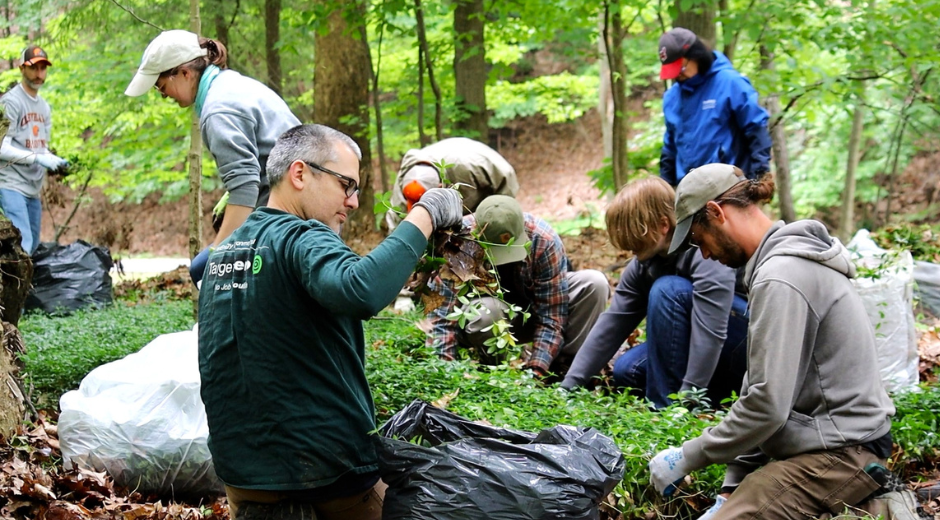FirstEnergy Volunteers Fight Fast Growing Invasive Plant Foes
As summer settles into Northeast Ohio, the region’s warmth and frequent rainfall create the perfect environment for rapid plant growth. But not all greenery is good for the environment—or for the electric system. Invasive plant species like Callery Pear, Multiflora Rose, garlic mustard, Japanese knotweed and honeysuckle can create serious challenges for both ecosystems and access to electrical equipment, quickly choking out native species and altering habitats for birds, insects and other wildlife.
That’s why FirstEnergy’s Green Teams, made up of employee volunteers focused on environmental initiatives, roll up their sleeves, put on gloves and take on tackling aggressive invaders in communities the company serves.
“Summer is when some invasive species grow the fastest and strongest,” said Jessica Shaffer, Advanced Scientist at FirstEnergy. “Invasive plants don’t just threaten biodiversity – they can also complicate routine maintenance and power restoration within FirstEnergy’s service territory.”
The company’s Ohio Green Team recently spent hours in the Cleveland Metroparks’ Euclid Creek Reservation pulling invasive plants by hand, cutting back overgrowth and hauling away debris.
Watch a video on Youtube of the Euclid Creek Reservation clean-up.
Invasive species often lack natural predators, which can allow them to spread unchecked. They degrade soil quality, reduce biodiversity and increase the risk of erosion along waterways.
FirstEnergy’s Vegetation Management teams play a critical role in maintaining reliable electric service by managing plant growth near power lines and equipment, ensuring that overgrown or invasive vegetation doesn’t interfere with the energy infrastructure customers depend on.
“When volunteers and community organizations help clear out aggressive plants early, we reduce the risk of overgrowth in the right of way near our equipment down the line. It’s a proactive approach that supports both environmental health and the long-term reliability of our electric system,” said Tyler Woody, Forestry Manager at FirstEnergy.
Community members can help support the fight against invasive species by learning how to identify them and avoid planting these varieties in their own yards. Instead, choose native plants that support local wildlife and require less maintenance.
FirstEnergy’s commitment to sustainability extends beyond removal efforts. In areas where invasive species have been cleared, employees are also helping to restore the land by planting native species to ensure the spaces remain healthy, vibrant and resistant to future invasions. For example, FirstEnergy volunteers planted native wildflowers and shrubs at Camp Mountaineer in Morgantown, West Virginia, this spring, after a local Boy Scouts troop removed invasive plants.
Learn more about FirstEnergy’s environmental and corporate responsibility efforts to build a brighter and more sustainable future on our website.

